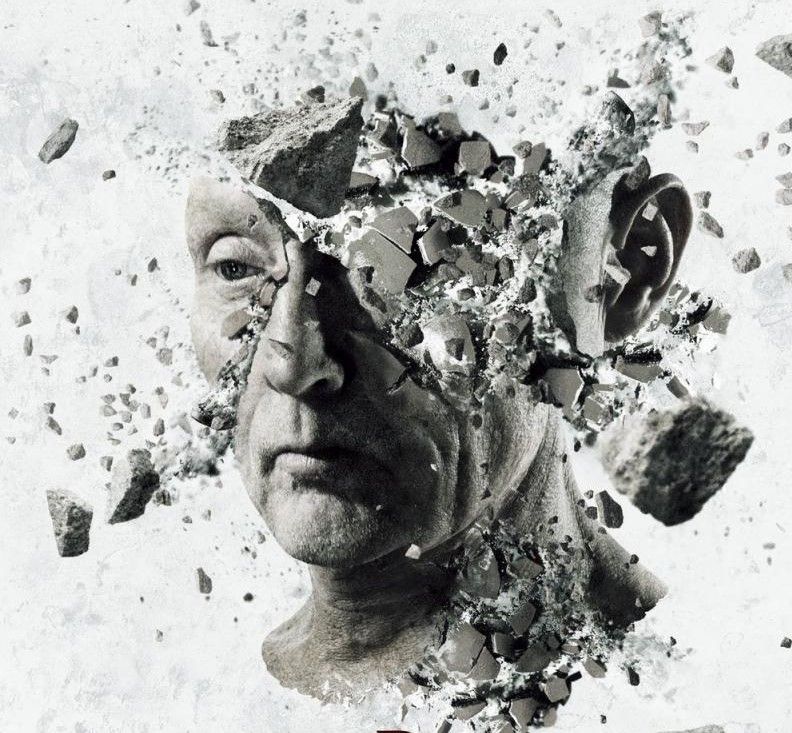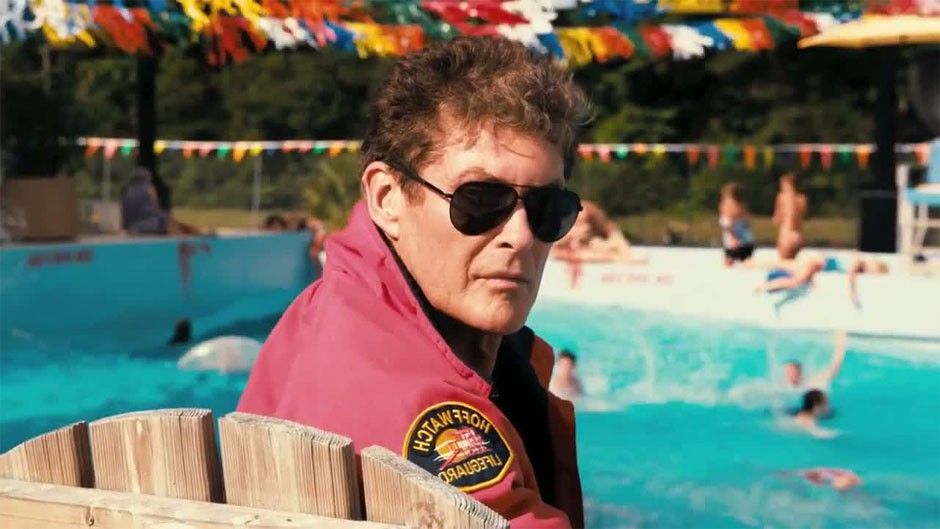
Saw Writers Share Behind-the-Scenes Secrets
From the L.A. Screenwriter collection.
If you’re trying to figure out how to make your horror script work, you’ve probably read the scripts of writing team Patrick Melton and Marcus Dunstan. And if you haven’t, you need to.
Patrick and Marcus are two of the most prolific and successful horror screenwriters working in Hollywood today. The pair got their start when they won Project Greenlight in 2005. After that, they were chosen to take over the infamous Saw franchise, writing Saw IV, Saw V, Saw VI, and Saw 3D: The Final Chapter. They’re also the writing team behind The Collector and Piranha 3DD, plus they’ve done countless rewrites on other major horror films over the last ten years.
LA Screenwriter (LA): I think it’s fair to say that your joint career was launched by your win on Project Greenlight. What was that experience like?
Patrick Melton: I went from being a reader at ICM to being put on TV with my screenplay being made. It was surreal to say the least. My wife heard on the radio that they were looking for horror scripts. I mentioned it to Marcus and we submitted Feast. Obviously we didn’t expect to win, but we kept advancing and to our surprise, we won! Right away we were in preproduction on the script and forced to act like we knew what we were doing as the show documented us. It was definitely a little strange. But at the same time, we’d been in LA for several years, so we knew how to act. We knew to be humble and just work hard. Those two traits always pay off in the long run.
Marcus Dunstan: It was a pure Willy-Wonka moment. The experience of treading water for years and years was key to slowing time down a little bit when the rush of dreams coming true occurred. I remember sneaking off to the side of the set, built from words we’d imagined from ideas built over a childhood and I hid up atop the half-finished staircase of the bar, shut my eyes and just wanted to hold time, sneak a sensory photograph of that moment, and tuck it away in my heart. The hard work it took to get there was the armor to stick around after the lights and attention drifted away. Then, the guest chair at the adult table can be folded up or offered elsewhere. That was when the fight to stick around began. It wasn’t any easier, but always worth the fight to see another idea roar to life.
LA: How does your writing partnership work? What does a typical writing day look like for you two?
Patrick: We generally go back and forth on stuff. We’ll crack stories together and then go off and do our own thing. When making a film, we’ll be in the same room going over stuff, but we mostly write alone.
Marcus: It is a joy to share space and see moments spark and corners get shot out of. And yet, there is also a warm solace to writing. Wherever we are, be it in the same room or countries apart, the idea is shared and the journey mapped out.
LA: What advice would you give to other people trying to write in partnerships or teams?
Marcus: The key to writing with a partner is simple: work with the right one. Patrick is a great friend, father and parent. Our past, though varied, was built in the same dark theaters, and with the same engine to bring stories to life.
LA: All the screenwriting gurus talk about the importance of knowing the genre you’re writing in, and it seems like that might be more true for horror than any other genre. What drew you both to horror? What are your favorite horror screenplays, the ones you admire?
Patrick: Yeah, you should know the genre you’re writing in. Doesn’t take a guru to come up with that advice. Really, write within the genre you like. We grew up watching horror movies, so it was easy to write within the genre. Horror screenplays can often be a lot better than the movies because it’s easier to hide things in scripts. Jake Wade Wall wrote a great script years ago called Amusement. It had this great twist at the end where these three seemingly disconnected stories came together. Worked wonderfully in the script, but it didn’t work so well in the movie.
Marcus: Watching horror films was almost an entirely different experience than reading horror scripts. The emotional current, and scare factor is so very loud on a page. Bold black and white. All caps. Your eye can skip ahead a line or two, and see a SCREEEEAAAAAM coming. I love trying to find the music. Watching Suspiria and reading Suspiria cannot be compared. The murder-mystery script, be it Murder on the Orient Express or Happy Birthday to Me, are fascinating to reverse engineer.

LA: You two are extremely prolific with numerous films of your own and a lot of credited and uncredited rewrites. How do you keep your writing fresh? Or rather, how do you keep scaring people? It seems like it must get more challenging with each passing season.
Patrick: Well, when rewriting, you’re not necessarily trying to be fresh, you’re just trying to make something better or more understandable. Freshness sometimes has to do with that, but it’s often just a reactionary way of writing. With originals, you have more freedom, but now you’re hoping that others want to read/see something original and fresh. Often, horror fans or execs with knowledge like fresh and original, but the other 80% does not. It’s a tricky balance pleasing the bean counters and trying to show something really new and fresh to audiences.
Marcus: Fear matures, but the rules don’t. Something we care about wanders into the dark, something we fear is in there, too. Be it the monster, the slasher, the animal or the Babadook … it works, and works, and works. The silver-screen-scream-engine just keeps on chugging along. The evolving trick is authenticity. What sold the scare in the 1950’s doesn’t sell the scare in the 2010’s. The vernacular of the teen (a popular horror film target) changes with every trend. That is a tough mountain to keep climbing.
LA: What was it like taking over the Saw franchise?
Patrick: It was definitely scary coming into such a high profile, popular movie mid-stream. There were expectations that always needed to be met, so we tried to achieve those expectations. Our initial scripts were always way too big, trying to do more. They’d eventually get pulled back so they looked and felt like SAW movies. There were a lot of cooks in that kitchen, so you had to write within borders. Not to mention, the movies were always on a tight schedule, so you couldn’t screw around much. You had to deliver a SAW script that hit all the beats and milestones.
Marcus: We understood the parameters of the production, but the producers, directors, and artists always encouraged the material to push the boundaries in one way or another. Saw turned the tables on the idea of victims being innocent. The “pupils” of John Kramer’s games were broken adults who had been warned by horror movies, and still led a deceitful life. Jigsaw’s intent to “cure” his pupils allowed fertile soil to grow layered characters and put them through the ringer. It was an honor.
LA: Do you feel pigeonholed within the horror genre now? Are there other genres you’d like to take a stab at? I mean, do you ever think, “God, I just want to write a rom-com”?
Patrick: We haven’t worked on a horror film in several years. We’re working on a kids movie at Disney called The Stuff of Legend, which is based on the comic book. We just did a sci-fi script at Warner Brothers called Rise and another sci-fi thing at FOX called Outliers. We are working on Scary Stories to Tell in the Dark at CBS Films, and it’s horror, but it’s aimed at a younger audience like Gremlins or Goonies. We’re working on a horror spec and might be working on a pretty big horror franchise soon, but nothing to announce just yet.
Marcus: Horror has been too kind to us to ever turn our backs on it. It is still so very much fun to wander into the dark!
LA: Outside of horror, what are the films you draw inspiration from? The films you enjoy the most?
Marcus: Goodness … that is a tremendous question. I watch and re-watch films like comfort food. Different eras, and different genres depending on the task at hand. And usually, the films or screenplays are completely different than project we’re working on. I keep going back to Moneyball, Escape from New York, The King of Comedy … or Open Range. Each of those films contains an element that continues to fascinate. Perhaps it is elaborate story construction, tight filmmaking, a particular score which resonates … each film leaves behind a unique lesson.
Patrick: We watch just about every kind of movie, so we draw inspiration from everything. I just enjoy good movies the most. Doesn’t matter the genre, as long as it’s good. Singin' in the Rain is good, and it certainly isn’t horror. This year I thought Nightcrawler was the best screenplay. Lots of screenplays were good, but it had a special type of dialogue that stood out as very unique. It’s not traditionally written: the script is one sentence. There is not a period until the last word on the final page. It’s very cleverly done.
LA: If you were trying to break into professional screenwriting today, what would your strategy be?
Patrick: It depends on the circumstances of the individual, but the easiest and quickest way is to enter the film industry. Meaning, move to LA and get a job within the business. You’ll learn filmmaking from the inside out and learn what it takes to create a screenplay and become a working writer. It’s a grind. It’s not glamourous. And it’s not something done exclusively behind a desk. You have to meet people and be able to talk about the business and matters involved with filmmaking to really become a working writer. That only comes from living in Los Angeles.
Marcus: Stories are rooted in the shared experience. Live a life worth sharing, feed your mind with things worth remembering, and then, dare yourself to write something worth reading. The structure, form, and unique imprint of your perspective will make any work, be it horror, comedy, or adventure, spring from a point of authenticity. The more personal, the more universal.
*Feature Photo: Saw 3D / Lionsgate (2010)